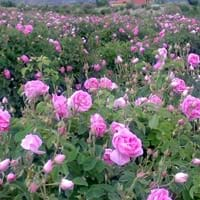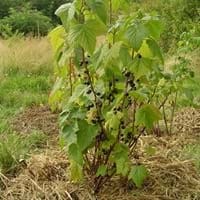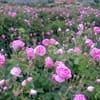Life Span
Perennial
Perennial
Type
Flowering Plants, Ornamental Plants, Perennial
Fruit
Origin
Hybrid origin
Europe, Central Asia, Western Asia
Types
Summer Damasks, Autumn Damasks
Not Available
Number of Varieties
Not Available
Habitat
gardens
Fertile bottom land, Temperate Regions
USDA Hardiness Zone
Not Available
Not Available
AHS Heat Zone
Not Available
8-3
Sunset Zone
Not Available
Not Available
Habit
Clump-Forming
Upright/Erect
Flower Color
Pink
Green, Purple
Flower Color Modifier
Bicolor
Bicolor
Fruit Color
Non Fruiting Plant
Purple, Black
Leaf Color in Spring
Green, Gray Green
Green
Leaf Color in Summer
Dark Green, Green
Green
Leaf Color in Fall
Green, Gray Green
Green
Leaf Color in Winter
Dark Green, Green
Light Green
Leaf Shape
Pinnate
Palmately Lobed
Plant Season
Spring, Summer, Fall
Spring, Summer, Fall
Sunlight
Full Sun, Partial Sun
Full Sun, Partial Sun, Partial shade
Growth Rate
Medium
Medium
Type of Soil
Loam, Sand
Loam
The pH of Soil
Acidic, Neutral
Acidic, Neutral, Alkaline
Soil Drainage
Well drained
Well drained
Bloom Time
Spring, Late Spring, Early Summer, Summer, Late Summer, Early Fall, Fall
Spring
Repeat Bloomer
Not Available
No
Tolerances
Drought
Drought
Where to Plant?
Container, Ground, Pot
Container, Ground, Pot
How to Plant?
Cuttings
Seedlings, Stem Cutting
Plant Maintenance
Medium
Medium
Watering Requirements
Average Water Needs
Keep the ground moist but not water-logged
In Summer
Lots of watering
Lots of watering
In Spring
Moderate
Moderate
In Winter
Average Water
Average Water
Soil pH
Acidic, Neutral
Acidic, Neutral, Alkaline
Soil Type
Loam, Sand
Loam
Soil Drainage Capacity
Well drained
Well drained
Sun Exposure
Full Sun, Partial Sun
Full Sun, Partial Sun, Partial shade
Pruning
Remove damaged leaves, Remove dead branches, Remove dead leaves
Remove damaged leaves, Remove dead branches, Remove dead leaves
Fertilizers
All-Purpose Liquid Fertilizer
10-10-10 diluted liquid fertilizer
Pests and Diseases
Beetles, Black Spot, Caterpillars, Downy mildew, Mosaic viruses, Powdery mildew, Rust, Scale insects, Thripes
Aphids, Earwigs, Insects, Mildew, Red blotch, Rust, sawflies
Plant Tolerance
Drought
Cold climate
Flowers
Showy
Insignificant
Flower Petal Number
Double
Single
Edible Fruit
Not Available
Yes
Foliage Texture
Medium
Medium
Foliage Sheen
Glossy
Matte
Invasive
Not Available
No
Self-Sowing
Not Available
No
Attracts
Birds, Butterflies
Birds
Allergy
Rash
Asthma, Eczema, Food Allergy, Hives
Aesthetic Uses
Showy Purposes
Not Used For Aesthetic Purpose
Beauty Benefits
Not Available
Not Available
Environmental Uses
Air purification
Air purification
Medicinal Uses
Not Available
Potassium, Rich in Iron, Vitamin B, Vitamin C
Part of Plant Used
Flowers
Fruits, Leaves, Seeds
Other Uses
Oil is used in perfume, soaps, creams, etc.
Traditional medicine, Used as a nutritious food item, Used As Food, Used for its medicinal properties
Used As Indoor Plant
Yes
Yes
Used As Outdoor Plant
Yes
Yes
Garden Design
Container, Cutflower, Feature Plant, Foundation, Mixed Border, Topiary / Bonsai / Espalier
Edible, Fruit / Fruit Tree, Hedges, Mixed Border
Botanical Name
Rosa × damascena
RIBES nigrum
Common Name
Damask rose, rose of castile
Black Currant
In Hindi
जामदानी गुलाब
Black Currant
In German
Damaszener-Rosen
Black Currant
In French
Le rosier de Damas
groseille noire
In Spanish
Rosa de Damasco, Rosa de Castilla
negro Grosella
In Greek
δαμασκηνό τριαντάφυλλο
μαύρη σταφίδα
In Portuguese
rosa damascena
groselha-preta
In Polish
Róża damasceńska
czarna porzeczka
In Latin
surrexit Damascum
nigrum currants
Phylum
Magnoliophyta
Magnoliophyta
Class
Magnoliopsida
Magnoliopsida
Family
Rosaceae
Grossulariaceae
Clade
Not Available
Angiosperms, Core eudicots, Eudicots
Tribe
Not Available
Not Available
Subfamily
Not Available
Not Available
Number of Species
Not Available
Not Available
Season and Care of Damask Rose and Black Currant
Season and care of Damask Rose and Black Currant is important to know. While considering everything about Damask Rose and Black Currant Care, growing season is an essential factor. Damask Rose season is Spring, Summer and Fall and Black Currant season is Spring, Summer and Fall. The type of soil for Damask Rose is Loam, Sand and for Black Currant is Loam while the PH of soil for Damask Rose is Acidic, Neutral and for Black Currant is Acidic, Neutral, Alkaline.
Damask Rose and Black Currant Physical Information
Damask Rose and Black Currant physical information is very important for comparison. Damask Rose height is 200.00 cm and width 200.00 cm whereas Black Currant height is 120.00 cm and width 120.00 cm. The color specification of Damask Rose and Black Currant are as follows:
Damask Rose flower color: Pink
Damask Rose leaf color: Green and Gray Green
Black Currant flower color: Green and Purple
- Black Currant leaf color: Green
Care of Damask Rose and Black Currant
Care of Damask Rose and Black Currant include pruning, fertilizers, watering etc. Damask Rose pruning is done Remove damaged leaves, Remove dead branches and Remove dead leaves and Black Currant pruning is done Remove damaged leaves, Remove dead branches and Remove dead leaves. In summer Damask Rose needs Lots of watering and in winter, it needs Average Water. Whereas, in summer Black Currant needs Lots of watering and in winter, it needs Average Water.





